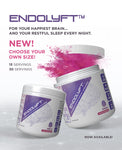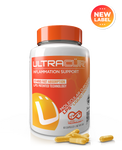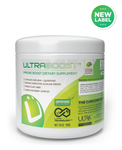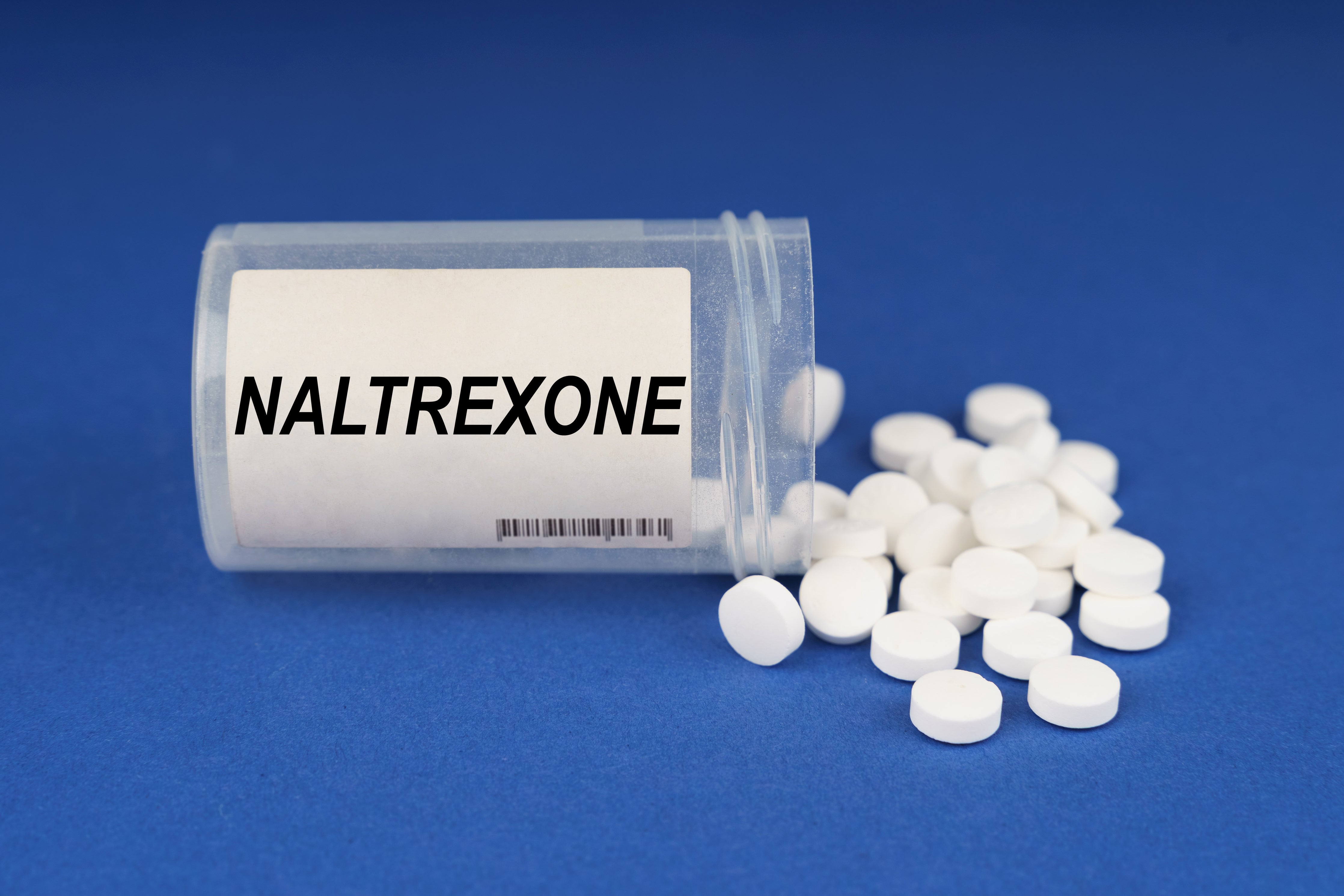A tiny dose of the drug naltrexone (as low dose naltrexone, or LDN) stabilizes the immune system, reduces inflammation, and improves endorphin production. Endorphins are your feel-good hormones. You can’t have too many of them. 😃
LDN has also been successfully used for many types of chronic pain, cancer, and autoimmune conditions... possibly something you or a loved one struggle with.
Read on to see why it may be a good fit for you...
An Opioid Receptor Antagonist
LDN is considered a competitive opioid receptor antagonist.
What’s that, you ask?
An opioid antagonist is a receptor antagonist that acts on the natural opioid receptors in your body.
As such, opioid antagonist drugs bind to the opioid receptors more strongly or with higher affinity than agonists. This blocks the opiate receptors and prevents the body from responding to drugs such as opioids or heroin.
Opioids, opioid agonists, and opiate antagonists all work the same way – by binding to the opiate receptors in your body.
However, there are differences between them. An opiate agonist binds to the opioid receptor and activates the receptor to do its job – which is to encourage endorphins and reduce pain.
An opioid antagonist binds to the same receptors and fights the opioid agonists. It’s a competition. The one with the higher affinity wins the battle.
Naltrexone is a powerful opioid receptor antagonist.
Low dose naltrexone is considered a pure antagonist, or a pure inhibitor... meaning that there’s no narcotic effect. It accomplishes its task without risk of addiction.

How LDN Works
Low Dose Naltrexone is given at a dose about 1/10th or less of the standard dose. Usually that’s about 4.5 mg per day.
LDN binds to your endorphin receptors for about 90 minutes and blocks them for four to six hours.
LDN is known for its analgesic, anti-inflammatory, and immune system actions. But it is also known for boosting the production of your own endorphins.
Endorphins are natural peptides that regulate cell growth. They’re produced in many of your cells (including immune cells). Notably, many people with chronic autoimmune and pain conditions have low endorphin levels.
With LDN you get a brief opioid blockade, and then a rebound effect to encourage natural endorphin production.
Mechanisms of Actions of Low Dose Naltrexone
Dr. Jill Smith discovered in 2007 that naltrexone exists in racemic mixture of isomers – i.e., “left-handedness” and “right-handedness” of compounds in equal portions – each offering different mechanisms of action.
Dextro-naltrexone does the following:
• Binds Toll-Like Receptors (TLR)
• TLR-4 receptors exist on microglial cells, other macrophages, and mast cells
• Activated microglial cells produce pro-inflammatory cytokines, substance P, and nitric oxide
• Result of binding TLR: lower inflammatory levels
As for Levo-naltrexone, it:
• Binds opioid receptors
• Creates a small temporary opioid blockade
• Up-regulates internal opioid production and opioid receptors
• Increases immune system endorphins

Useful for Cancer, Autoimmune Diseases, and More
There are no guarantees in science or medicine, because everyone is different. Just because LDN worked great for your friend doesn’t necessarily mean it will for you.
Having said that, Low Dose Naltrexone holds the potential to help millions of people suffering from autoimmune diseases, cancer, autism, chronic fatigue syndrome, fibromyalgia, Crohn’s, and more.
LDN is considered extremely safe, even during pregnancy, according to information my podcast guest, Dr. Deanna Windham, told us this week.
The drug is extremely affordable, generally about $1.00-$1.50 per day.
Here’s a partial list of conditions it can be useful for – most of which garnered an entire chapter in The LDN Book (Volumes 1, 2, and 3), by Linda Elsegood.
• Multiple sclerosis and lupus
• Inflammatory bowel disease and Crohn’s
• Chronic fatigue syndrome and fibromyalgia
• Thyroid disorders
• Restless leg syndrome
• Depression
• Autism
• Cancer
• Chronic pain syndromes including Complex Regional Pain Syndrome
• Gut health
• Parkinson’s disease
• Traumatic brain injury
• PTSD
• Lyme disease and other tick-borne illnesses
• Women’s health, conception, and hormonal balance
• Alzheimer’s and cognitive decline
• Diabetes
• COVID-19
• Rheumatoid arthritis
• HIV
And more.
Fortunately, inflammation can be rebalanced using many functional modalities, including dietary changes, nutritional supplementation, and now, Low Dose Naltrexone.
LDN as it’s used clinically today is considered off-label and needs to be made by a knowledgeable compounding pharmacy.
In an ideal world, more clinical trials will continue to support various uses of LDN.
The primary purpose of the LDN Research Trust is to help initiate LDN clinical trials to make it easier for people to get LDN.
This week’s podcast guest, Dr. Deanna Windham, volunteers with the LDN Research Trust. Their website has a vast collection of information about LDN and the conditions it is used for.
The LDN Research Trust has also published three books, which we encourage you to delve into if you want more information about Low Dose Naltrexone.
If you or a loved one suffers from any of the above-listed conditions, you owe it to yourself to try LDN. It could be the source of a greatly improved lifestyle, with no known harm.

Should You Consider a “Repurposed” Drug?
LDN was serendipitously discovered by Dr. Bihari who discovered that low doses of naltrexone could treat HIV/AIDS – in the 1980s and 1990s, a time when there were no known treatments for those conditions.
Repurposing drugs is a very common practice, contrary to what you might think.
Currently there are 7,000 diseases, including some rare and deadly ones, for which no treatment exists. Developing new drugs costs $2-3 billion, and can take 13-15 years to receive FDA approval. It’s also risky, as only 20% of proposed drugs make it to market.
Repurposed drugs already have a known safety profile. They are certainly not new to doctors or pharmaceuticals. New applications for existing drugs are found all the time.
Thus, repurposed drugs, low doses of existing drugs, and off-label uses of drugs such as LDN can provide a benefit that many patients can’t get any other way.
LDN is considered a very safe drug, and has proven clinical usefulness for a variety of conditions. If you struggle with a disease, LDN may be just what the doctor ordered.

Listen to This Week’s Podcast with Dr. Deanna Windham
To say that Dr. Windham is a proponent of LDN would be an understatement. When people come to her with health issues, she looks for a reason NOT to prescribe LDN!
Listen to this week’s podcast for her take on LDN – when and how she prescribes it for patients, as well as her personal LDN story.
You’re sure to gain insights about whether it might a beneficial move for you or a loved one.




